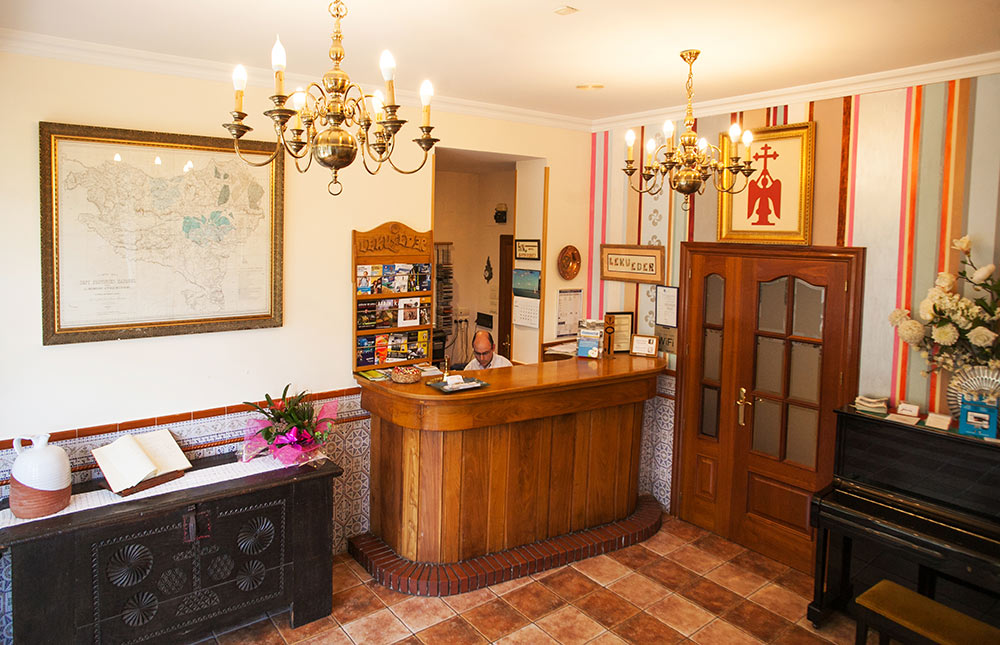Strategically situated facing the Bay of Biscay and founded around the emblematic La Concha Bay (shell-shaped bay), Donostia / San Sebastian, with 180,000 inhabitants, is the capital of Gipuzkoa. Sea, river, mountains and architecture blend together to form a harmony of natural countryside and preserved buildings which tell stories about the city’s past. The city has survived 12 fires since the 13th century, the last of which, in 1813, almost completely destroyed it.
La Concha Bay borders the city centre and stretches as far as Ondarreta beach, which ends at the famous sculpture “El Peine de los Vientos” ( The Wind’s Comb ) by Eduardo Chillida, native of San Sebastian. From here, a picturesque funicular railway leads to the top of Mount Igeldo, from where you can contemplate breathtaking panoramic views.
Other sights in the area include Miramar Palace with its beautiful gardens in the El Antiguo quarter. This magnificent English cottage-style building was inaugurated in 1893 as a summer home for Queen Maria Cristina and is situated in a privileged position, between the two beaches, with marvellous views of the city.
In the city centre beside the river Urumea stand two beautiful buildings dating from the beginning of the 20th century, Maria Cristina Hotel and Victoria Eugenia Theatre, which together with the Boulevard add to the city’s romantic style. The Town Hall building, inaugurated in 1887, once housed a Casino and its main facade overlooks the Alderdi-Eder Gardens. On the other side of the river, Kursaal Centre is situated at one end of Zurriola promenade. This example of vanguard architecture, formed by two translucent glass cubes and designed by the famous architect Rafael Moneo, consists of two auditoriums, a number of meeting and exhibition rooms, a restaurant, a café, shops and a car park.
The city’s highly attractive Old Quarter, at the foot of Mount Urgull and flanked by the port and the river, is a renovated pedestrian area with narrow streets which preserve the former medieval layout. Here you will find a great number of restaurants, bars (where you can try the delicious “pintxos”/”tapas”), small shops and historical monuments to suit all tastes, all year round and at any time of the day. Places of historical interest include San Telmo Museum, housed in a former Dominican monastery which dates back to the 16th century and converted into the Museum for Basque Culture, the Church of San Vicente, a gothic building from the beginning of the 16th century which contains a valuable Renaissance altarpiece and the 18th century Basilica of Santa María del Coro, where the city’s patron saint is worshiped, with a beautiful Plateresque portico. You can complete your visit by following the cultural circuit of Mount Urgull.
One of the Old Quarter’s most characteristic parts is Plaza de la Constitución (Constitution Square) whose main façade, was once the Town Hall and now the municipal library. The nearby fishing port, with typical fishermen’s houses and small restaurants, ends at the Naval Museum and the Aquarium, which contains the most spectacular oceanarium in Europe. At the other end of the port stands the Nautical Club, a modernist building, just a few metres away from the magnificent Town Hall building, which was a Casino from 1887 to 1923.
The city’s central streets, some of them pedestrian, are lined with a variety of shops. The Koldo Mitxelena Cultural Centre is situated behind the Buen Pastor Cathedral and overlooking the gardens of Gipuzkoa Square stands Gipuzkoa´s Regional Council Palace.
The Technological Park dedicated to research and the Kutxaespacio Science Museum, surrounded by a large green area, are located a short distance from the centre. Aiete and Cristina Enea Parks are perfect places to relax right in the city centre.
Cultural, sports and leisure activities also form part of the city’s attraction. Classical, folk and popular music brings music lovers together in a number of indoor and open-air festivals and concerts held each year. The Musical Fortnight, the Great Week, in August, the International Fireworks Competition, horse races, the Jazz Festival, boat races in La Concha Bay, the International Cinema Festival and the Tamborrada (a drum festival) are just some of the events that are repeated every year with an increasing participation and enthusiasm.
San Sebastian is also the birthplace of high quality Basque gastronomy. Prestigious chefs and restaurants scattered around the city and territory are highly classed in important culinary guides and it has been the place with most Michelin-starred restaurants per square kilometre in the world.

